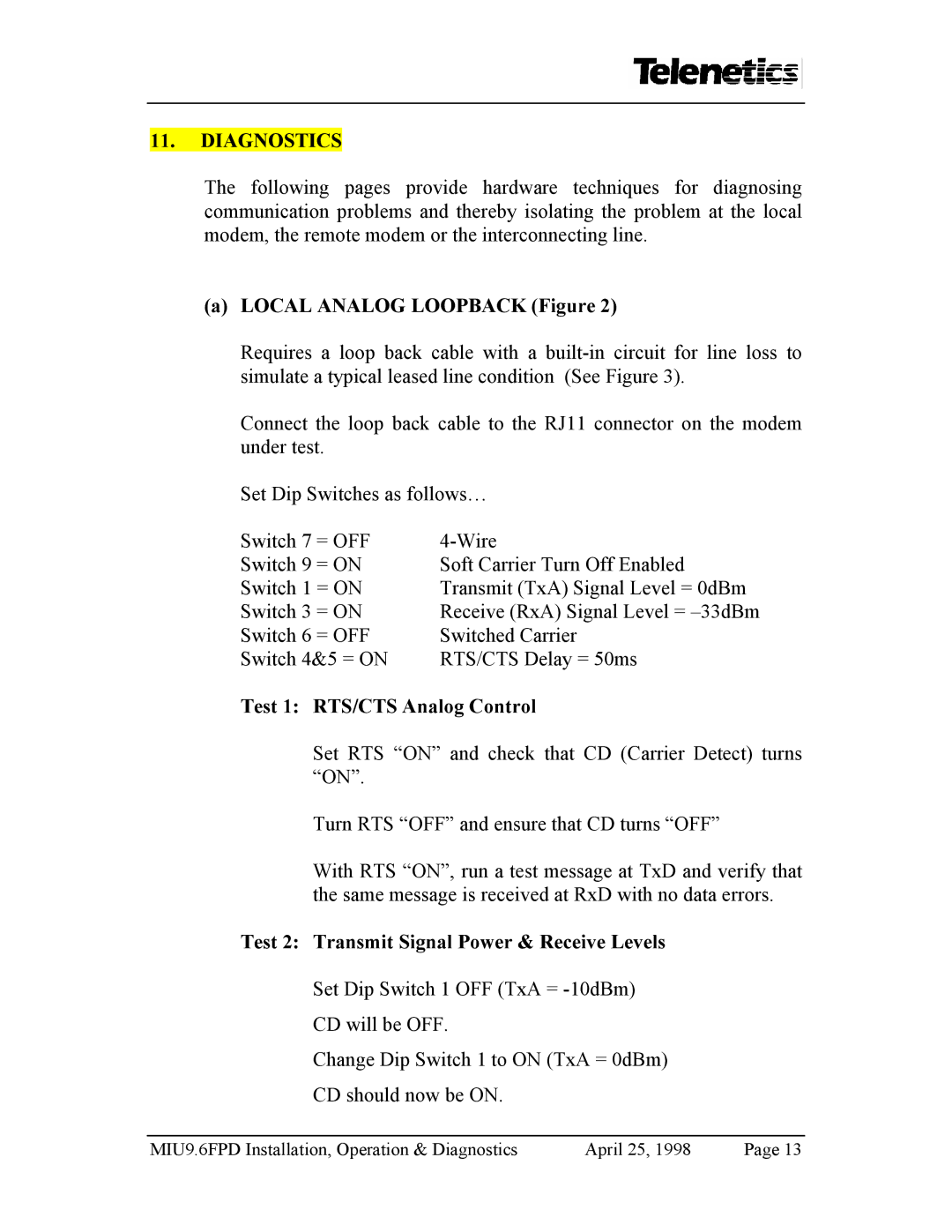
11.DIAGNOSTICS
The following pages provide hardware techniques for diagnosing communication problems and thereby isolating the problem at the local modem, the remote modem or the interconnecting line.
(a)LOCAL ANALOG LOOPBACK (Figure 2)
Requires a loop back cable with a
Connect the loop back cable to the RJ11 connector on the modem under test.
Set Dip Switches as follows…
Switch 7 = OFF | ||
Switch 9 | = ON | Soft Carrier Turn Off Enabled |
Switch 1 | = ON | Transmit (TxA) Signal Level = 0dBm |
Switch 3 | = ON | Receive (RxA) Signal Level = |
Switch 6 | = OFF | Switched Carrier |
Switch 4&5 = ON | RTS/CTS Delay = 50ms | |
Test 1: RTS/CTS Analog Control
Set RTS “ON” and check that CD (Carrier Detect) turns “ON”.
Turn RTS “OFF” and ensure that CD turns “OFF”
With RTS “ON”, run a test message at TxD and verify that the same message is received at RxD with no data errors.
Test 2: Transmit Signal Power & Receive Levels
Set Dip Switch 1 OFF (TxA =
CD will be OFF.
Change Dip Switch 1 to ON (TxA = 0dBm)
CD should now be ON.
MIU9.6FPD Installation, Operation & Diagnostics | April 25, 1998 | Page 13 |
